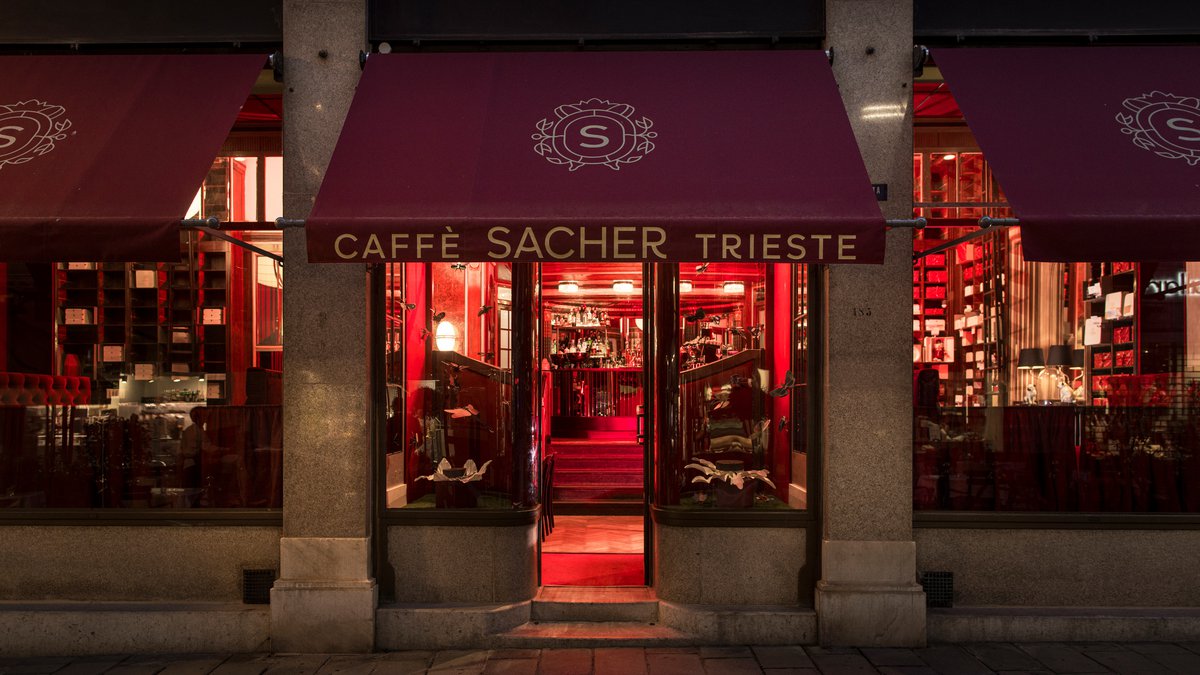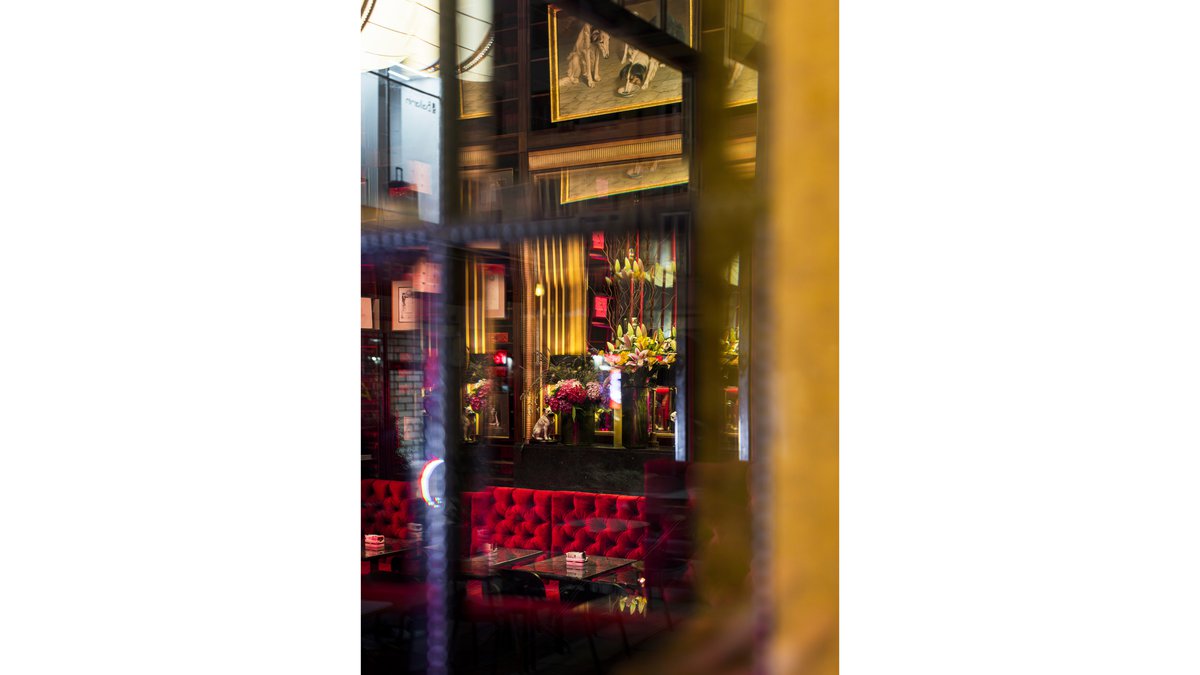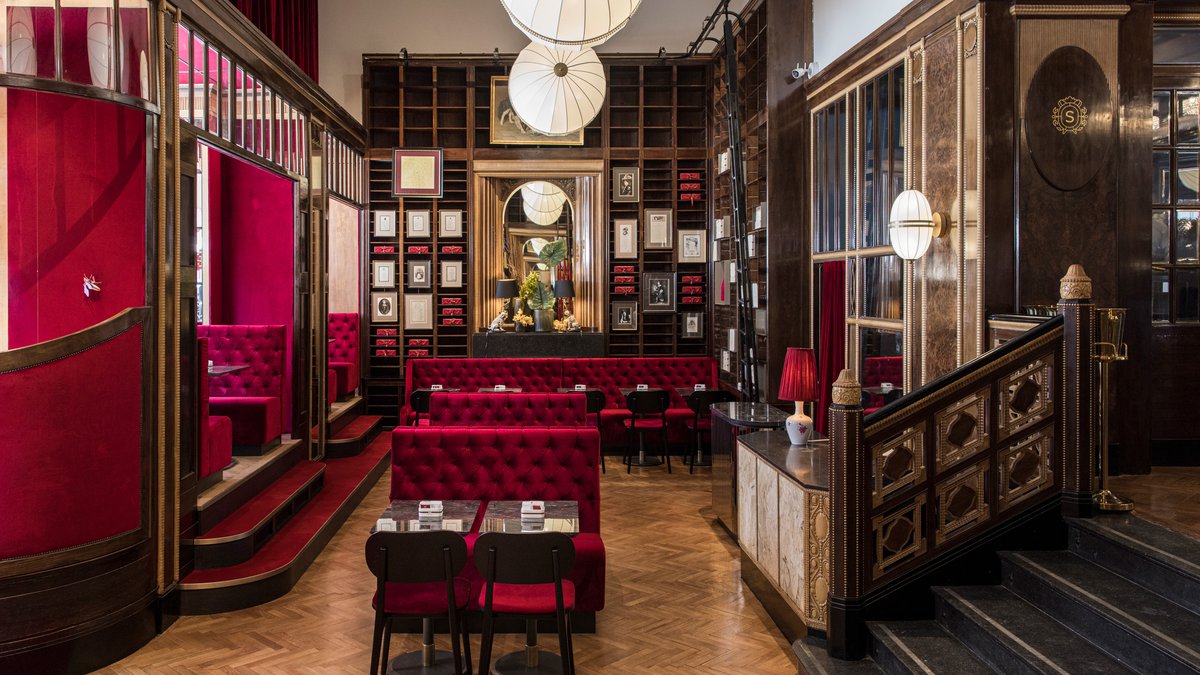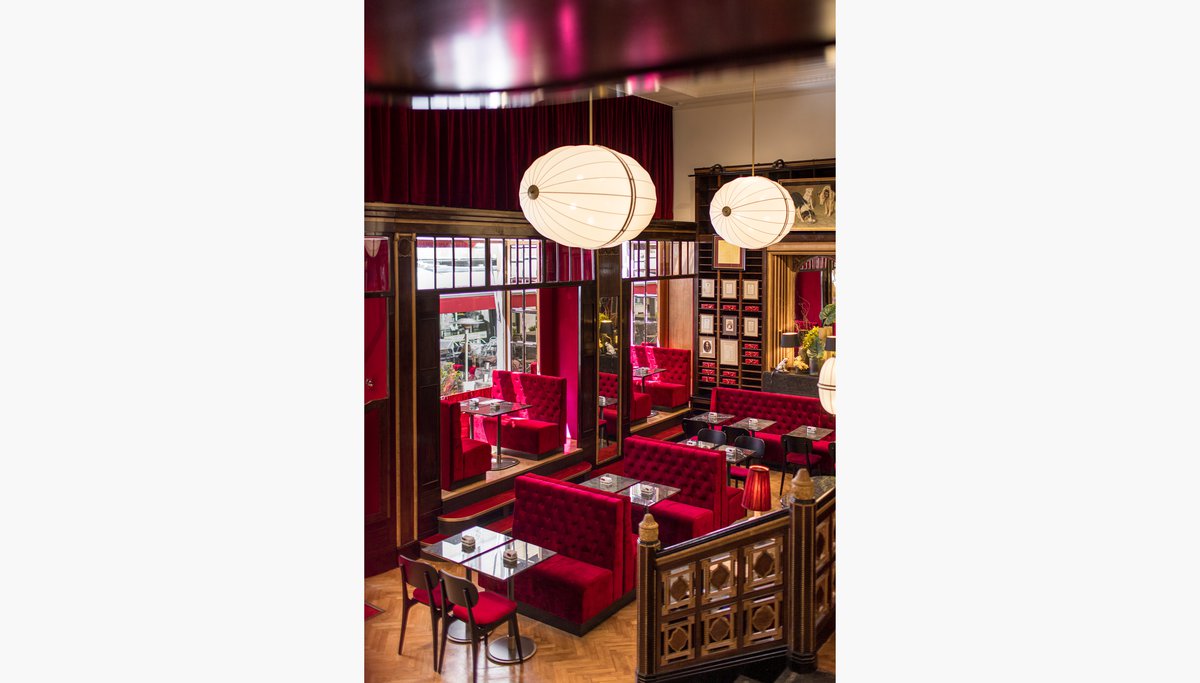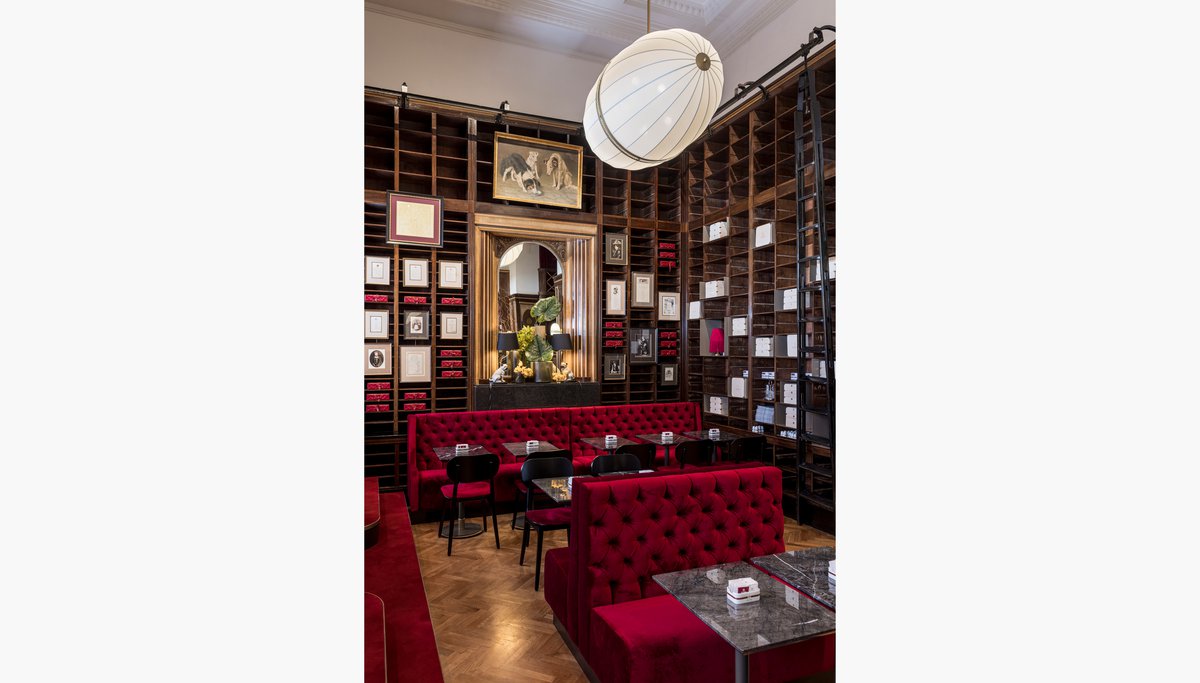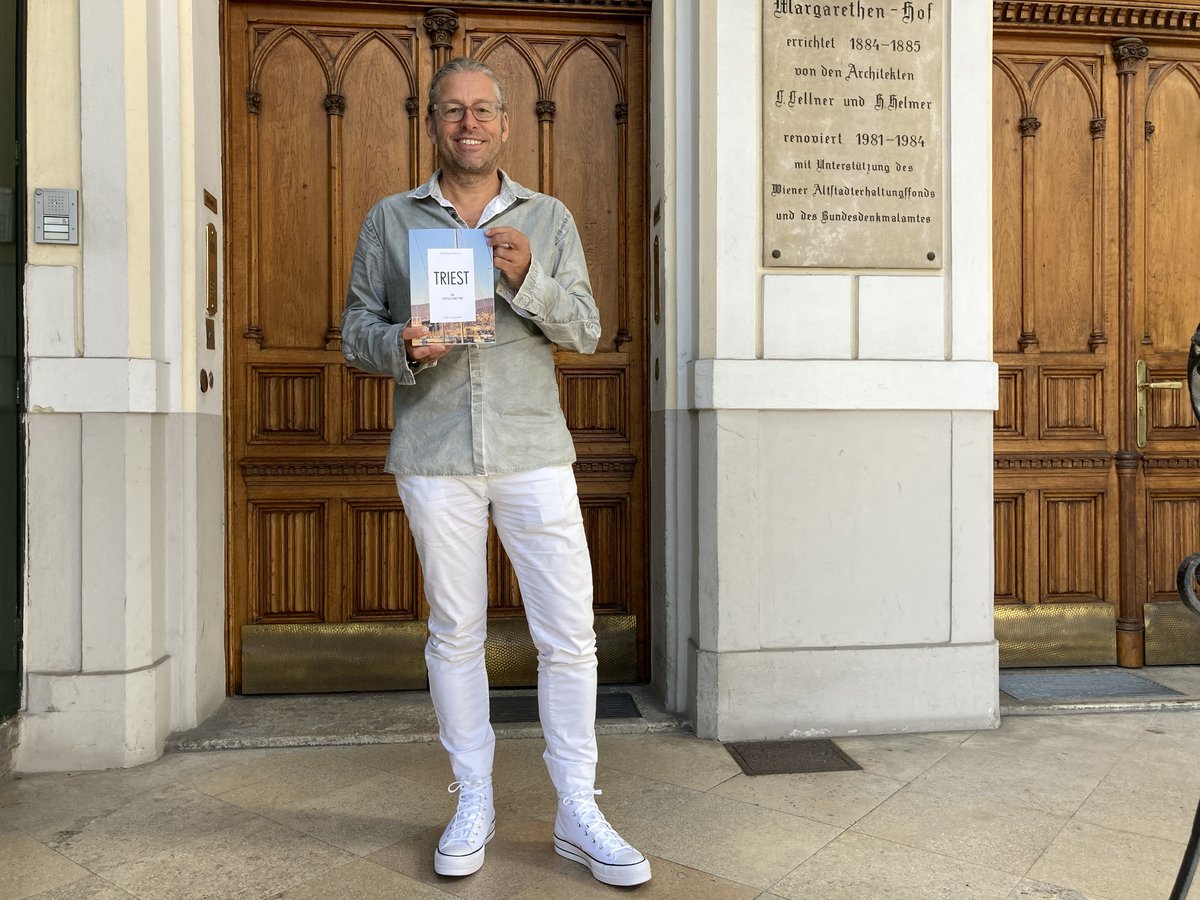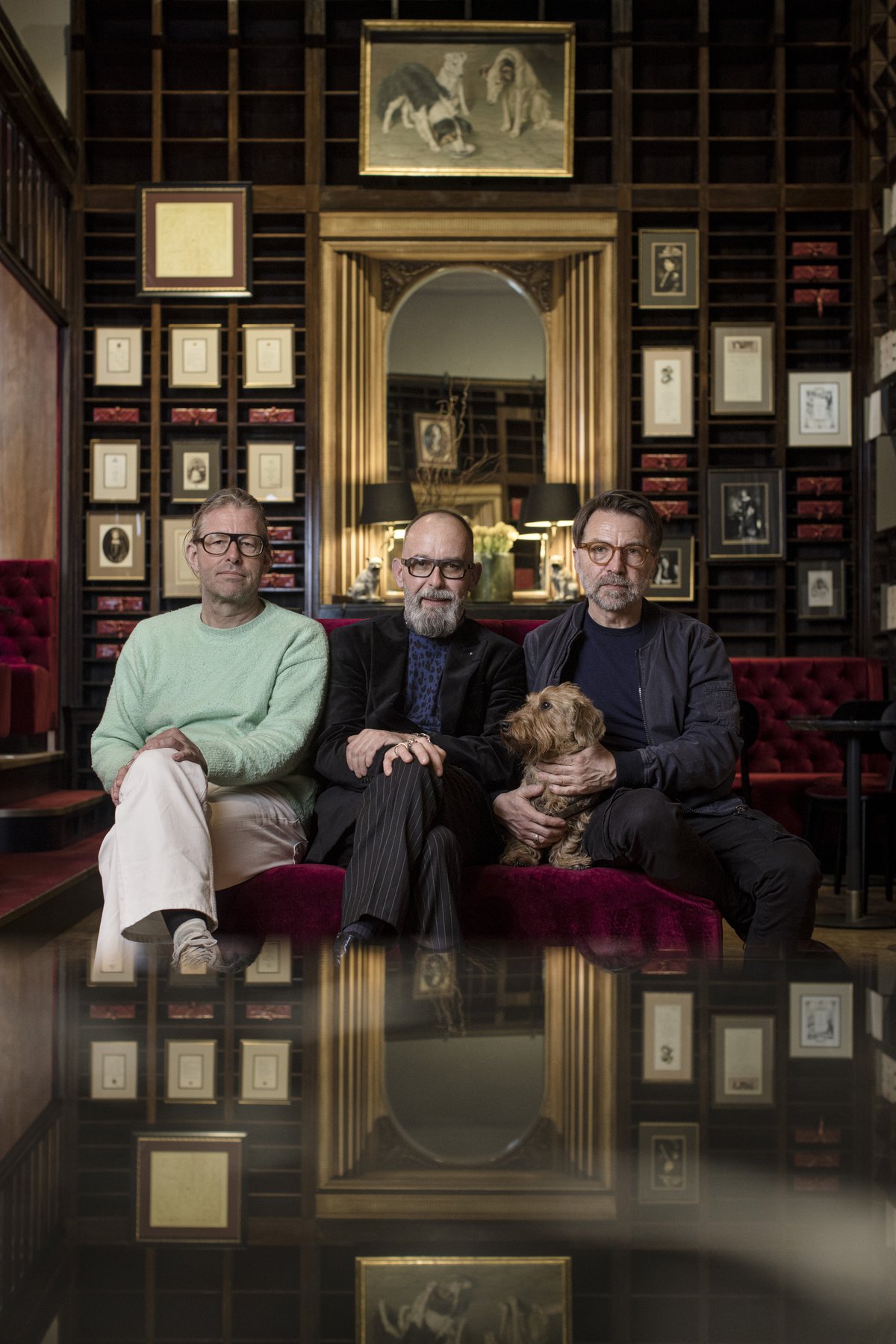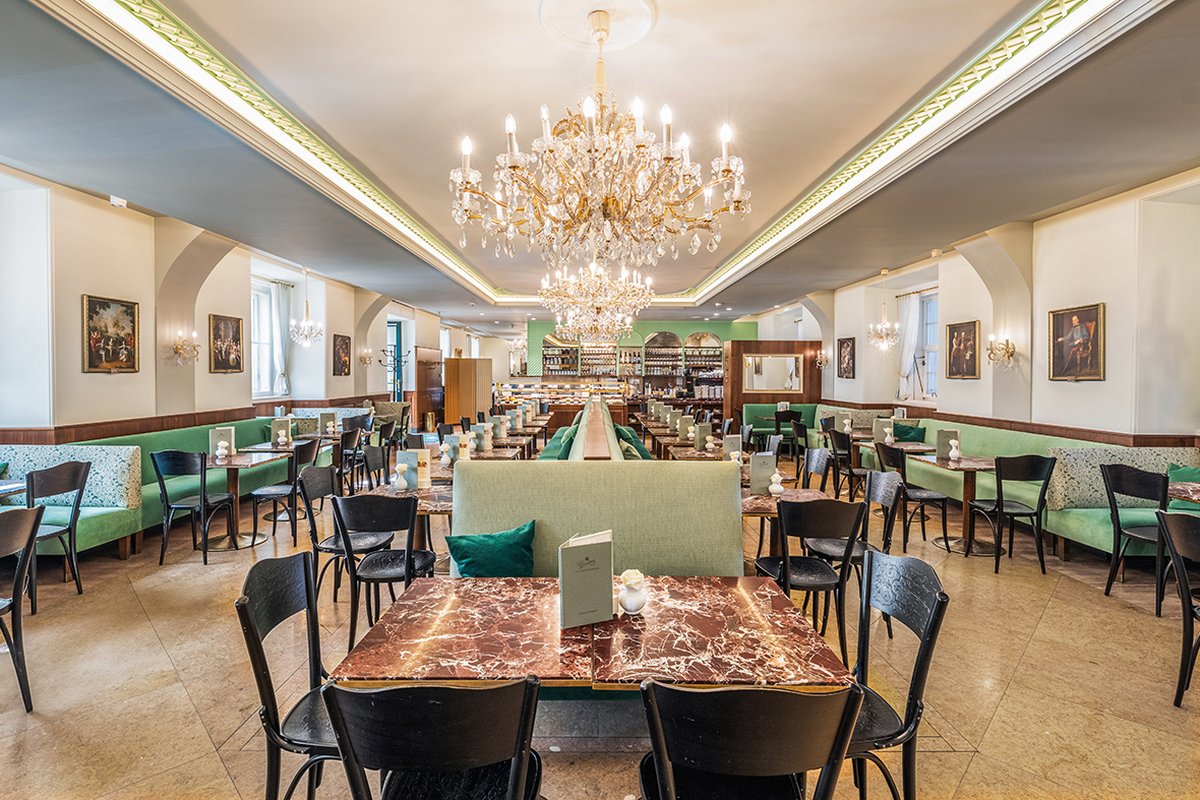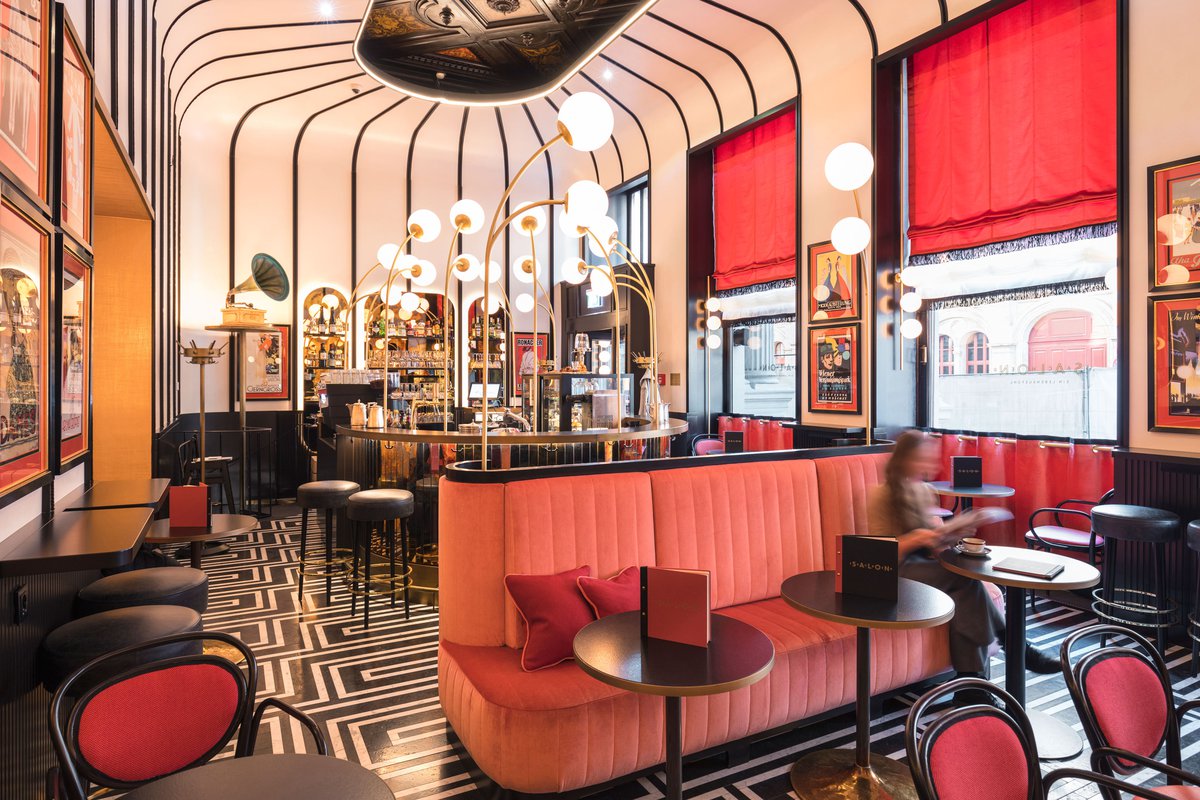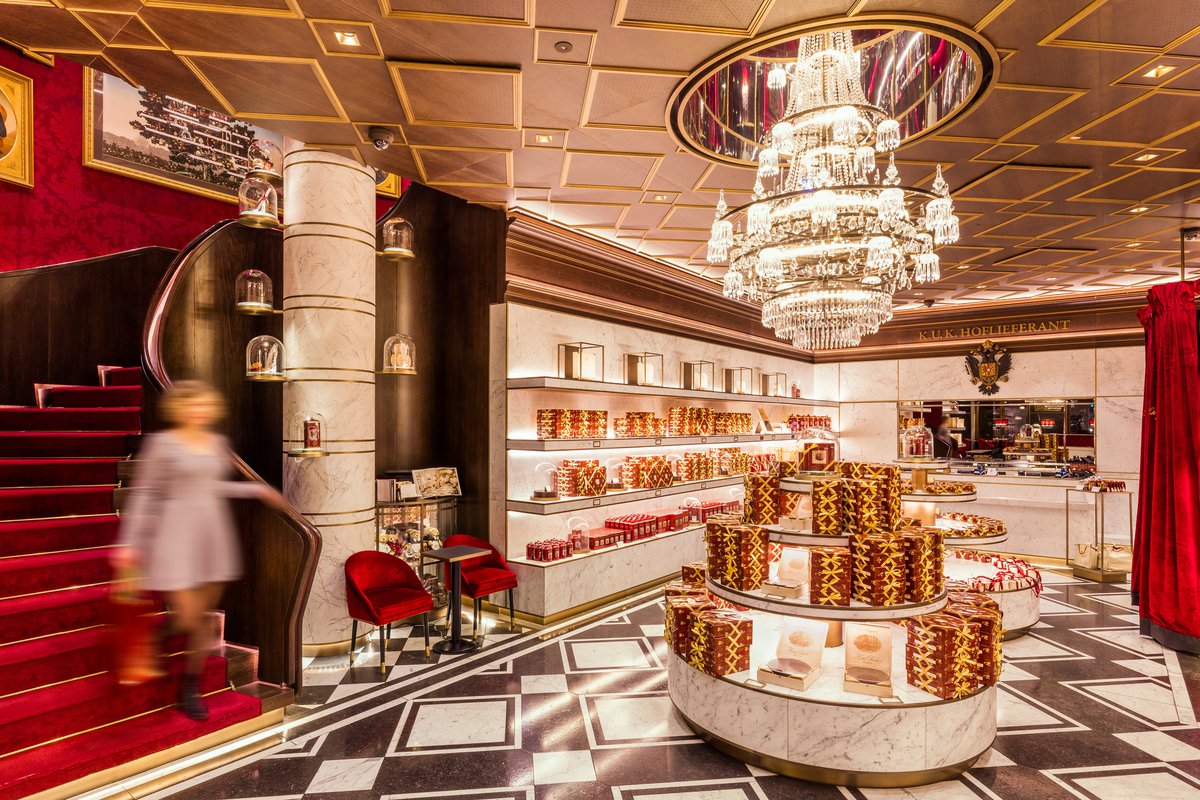Caffè Sacher Trieste
Vienna coffee tradition in Triest
Located in the lively pedestrian zone just a stone’s throw from the Corso Italia right in the centre of Trieste, the new Caffè Sacher Trieste has opened its doors! Proprietor Dizzi Alfons, BWM architect Erich Bernard and interior stylist Peter Weisz brought the famous Sachertorte to Trieste and saved the heritage building, where they put a lot of thought and care into integrating the new elements into the restored original furnishings from 1912.
Thanks to its historic interior, the new Caffè Sacher is one of Trieste’s most exquisite commercial properties. In the lively pedestrian zone in the very heart of the city, just a stone’s throw from the Corso Italia, BWM Designers & Architects are converting the former Rosini shoe shop into Caffè Sacher Trieste, in collaboration with Aulo Guagnini, Atelier Peter Weisz and interior designer Evi Märklstätter/Studio 13 Crad. The interior design draws its inspiration from the Sacher Eck and Salon Sacher cafés – also designed by BWM Designers & Architects – in the world-famous Hotel Sacher in the centre of Vienna and combines it with the meticulously restored original furnishings from 1912.
Sacher is one of the few traditional Austrian brands that are famous beyond Austria’s borders. “Italians know and love the Sacher brand. And Trieste is concentrated European history, with much shared heritage with Vienna. So these two things seem predestined for each other,” says proprietor Dizzi Alfons, explaining the reasoning behind his idea to open Caffè Sacher Trieste.
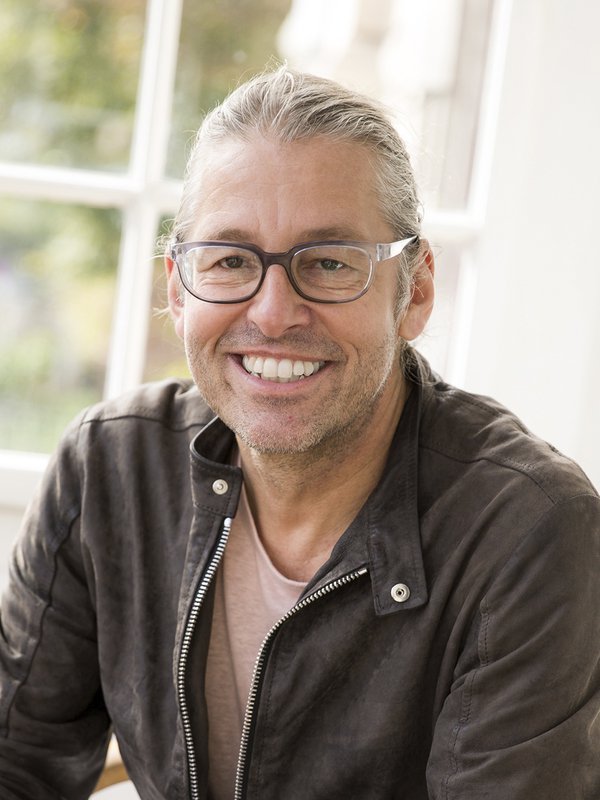
We always carry out a precise historical analysis before starting the design process. This was no different here. The redesign was undertaken with the greatest sensitivity and, above all, in close dialogue with the existing architecture.Erich Bernard
Preserving historical elements
The café is housed in a heritage building that dates back to 1912. The magnificent Palazzo RAS, the former headquarters of the Riunione Adriatica di Sicurtà insurance company, was built by the famous Triestine architects Arduino and Ruggero Berlam. Besides a cinema and a large department store (currently, a COIN), the Palazzo RAS also housed the “Fassel American shoe store” belonging to the Viennese shoemaker Berthold Fassel (Fratelli Fassel – Vienna, Prague, Trieste, Carlsbad, Budapest, Lviv and Innsbruck). The store’s furnishings came from the Vienna workshop of furniture manufacturer Heinrich Röhrs in 1912. Clearly in the style of the Vienna Secession, they are said to have been based on designs created by a Viennese architect. In the 1960s, the interior was redesigned, and new fixtures were installed; however, despite having been covered up, the original furnishings remained almost fully intact and have been carefully exposed and restored in collaboration with the local heritage protection authority.
“We always carry out a precise historical analysis before starting the design process,” Erich Bernard, BWM designer/architect and monument protection expert, explains. “This was no different here. And as regards our design concepts, we set great store by being respectful of and in harmony with the existing elements.” Accordingly, for this project, it was very important to Erich Bernard to do extensive research into the former premises of the Rosini shoe shop and - through Aulo Guagnini - in the historical archives of Trieste and Allianz. To support the preservation of this exquisite property, BWM Designers & Architects even decided to invest in Caffè Sacher Trieste themselves by buying shares.
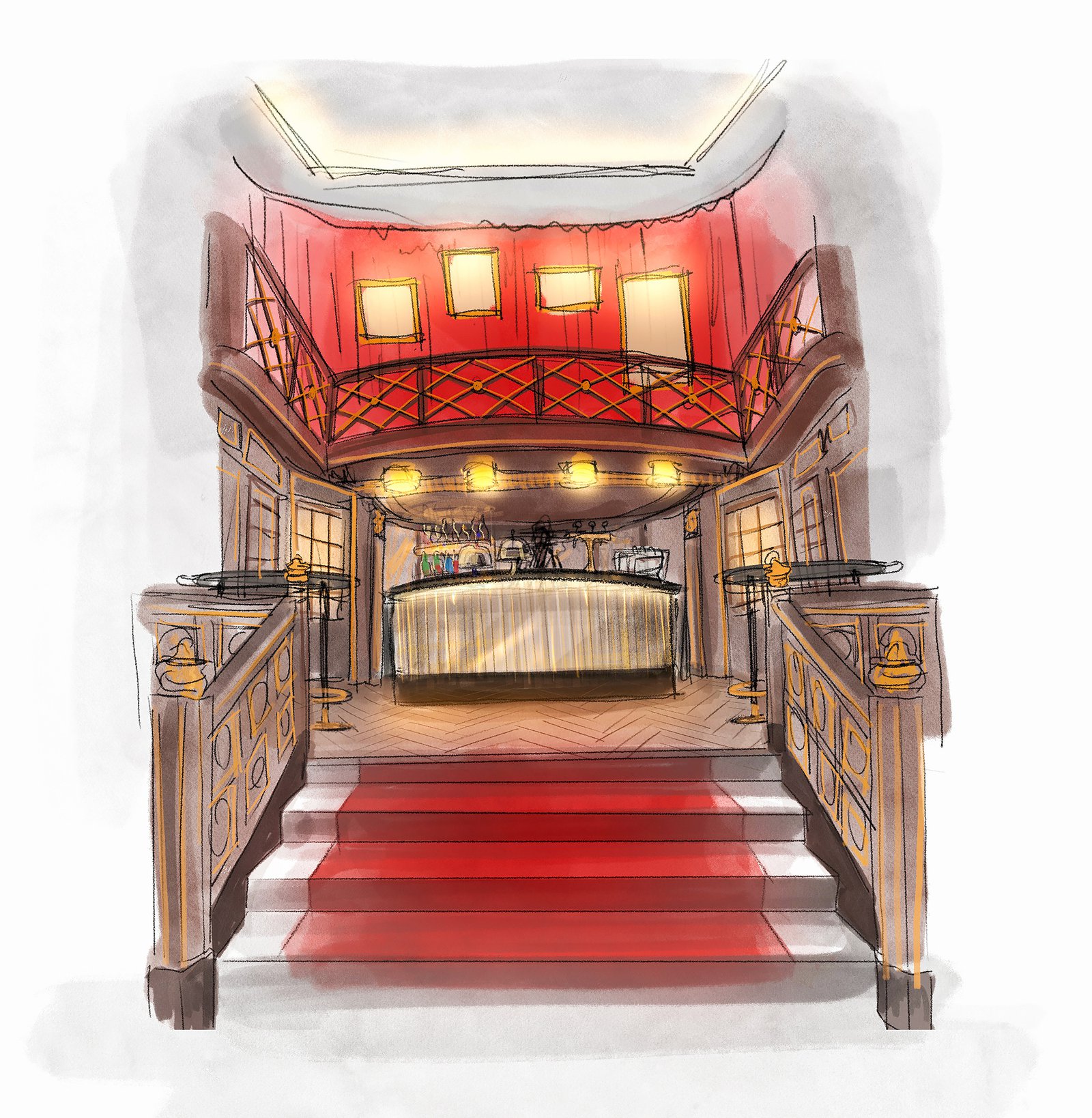
Inspired by Art Deco
The interior concept of the new Caffè Sacher Trieste aligns with that of the two cafés in Hotel Sacher in Vienna, which were also redesigned by BWM, in that it likewise draws on the style of the 1920s to 40s and marries original elements and contemporary design. The historical floor-to-ceiling shelves framing the stone fireplaces and the large mirrors positioned above them serve to present the world-famous Sacher Torte.
Two Secessionist-style desks made from wood and white and black marble now stand in their original spots; one is used as a presentation surface, and the other serves as a cash desk. The original wainscoting in the café windows has been restored. In addition, the steel and glass structure of the original facade, which was also built by a Vienna-based workshop, was discovered behind some gypsum cladding and uncovered.
All of these measures contributed towards unearthing the precious heritage of this Liberty-style gem and making it accessible for all.
Traditional yet new
When designing the new furniture for the Caffè/Negozio Sacher Trieste, particular attention was placed on integrating it into the original interior (the restoration was coordinated by Studio Guagnini). At the same time, it is vital that the fittings reflect the Sacher brand identity, while being unique and by no means copying the original pieces designed by BWM for the Vienna cafés.
The typical red velvet is a distinctive feature and a common thread that runs through the interior: a red velvet sofa immediately catches the eye when entering the café, and the former shoe display podiums have been converted into comfortable seating niches in red velvet. BWM Designers & Architects thoughtfully integrated the original wainscoting with facetted mirrors into their design, thereby giving the room a sense of spaciousness and generally opening it up. Other striking elements are the light fixtures, which are based on a lamp designed by Vienna architect Josef Hoffmann in 1912.
A charming interpretation of the Blue Bar in the Sacher hotel in Vienna was created. This gem was realised by interior stylist Peter Weisz and interior designer Evi Märklstetter, in close cooperation with Sacher co-owner Alexandra Winkler. “The biggest challenge lies in interpreting the past in a way that signals today, while staying true to the DNA of the Sacher world,” says Peter Weisz, who was involved in designing and implementing the flair and the ambience from the very beginning. “Dizzi Alfons and I wanted guests to get the full experience of the unique Sacher tradition.”
Caffè Sacher Trieste offers seating for more than 50 guests across a floor area of about 85m2. In addition, another 50 guests can be served at the tables in the pedestrian zone in front of the café.
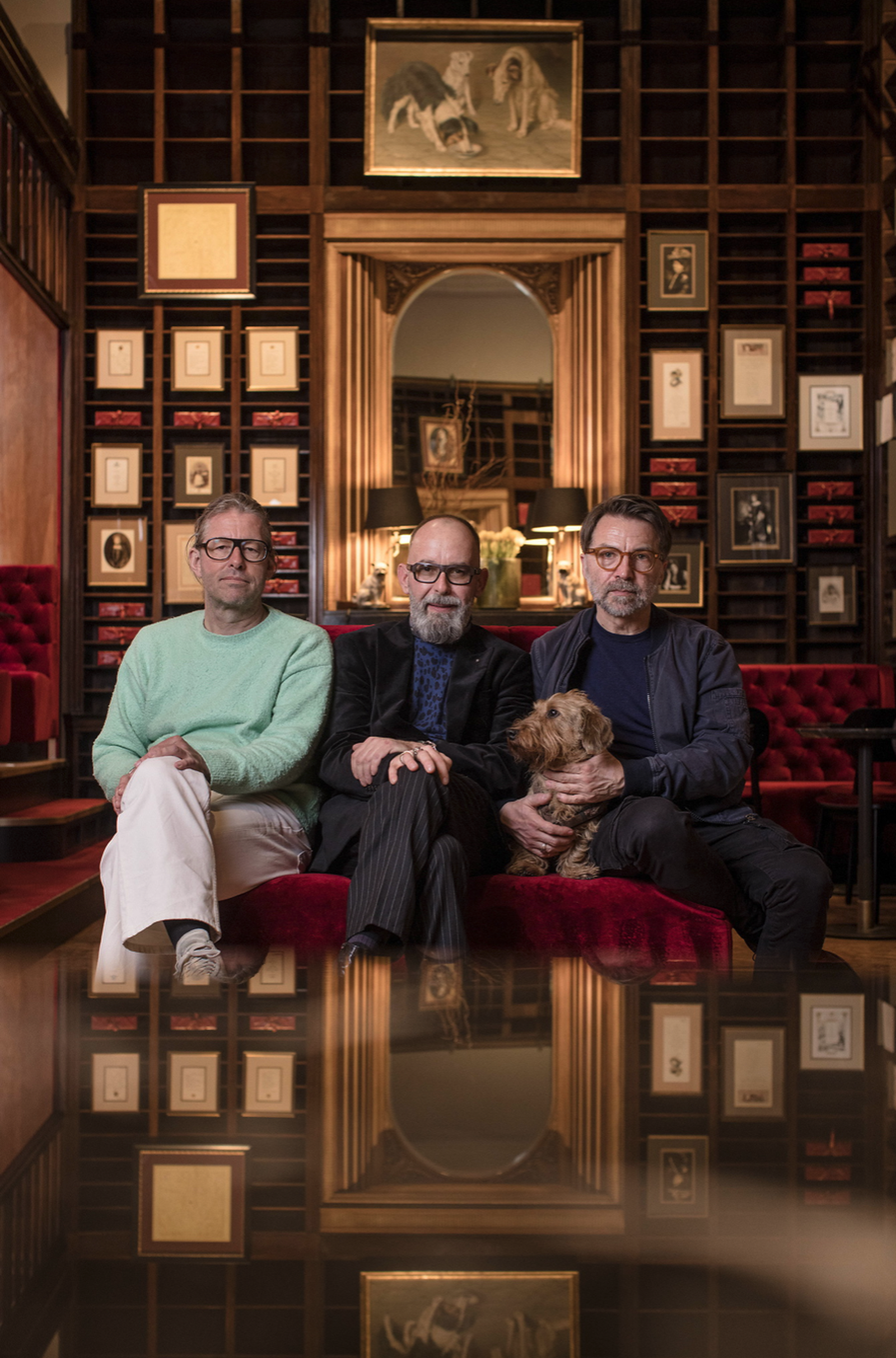
Task
A new design for heritage-protected business premises, conversion into a Sacher café and shop in the heart of Trieste, with seating for more than 50 guests in an Proprietor/licensee: Dizzi Alfons Interior design: BWM Designers & Architects Inte85m2 space.
Status
Completion
04/2023
Client
Dizzi Alfons
BWM Team
Erich Bernard, Rita Guggenberger, Christiane Geymayer
Image credit
Photo: Giuliano Koren
Participants
Proprietor/licensee
Dizzi Alfons
Interior design
BWM Designers & Architects
Interior styling
Atelier Peter Weisz & interior designer Evi Märklstätter/Studio 13 Crad
Architectural/structural design, site management and safety coordination
Aulo Guagnini
F&B consulting
Christian Bayer-Eissler
Lighting design
Klaus Pokorny
Press
29 September 2023
Il Meridiano
L'arte entra nel Cafè Sacher di Trieste, la prima mostra è di Giulia Crimaldi
Link PDF5 June 2023
fm-online.at
Café Sacher in Triest eingeweiht
1 June 2023
triesteprima.it
Torte di lusso, salsicce croccanti e champagne: le meraviglie del primo Caffé Sacher in Italia
Link PDF2 May 2023
DerStandard
Das neue Caffè Sacher in Triest ist ein prächtiger Ort schwülstiger Nostalgie
Link PDF15 April 2023
Corriere della Sera
